Leeds Summer Group Show 2020: Interview with organiser and curator Courtney Spencer
August 5, 2020
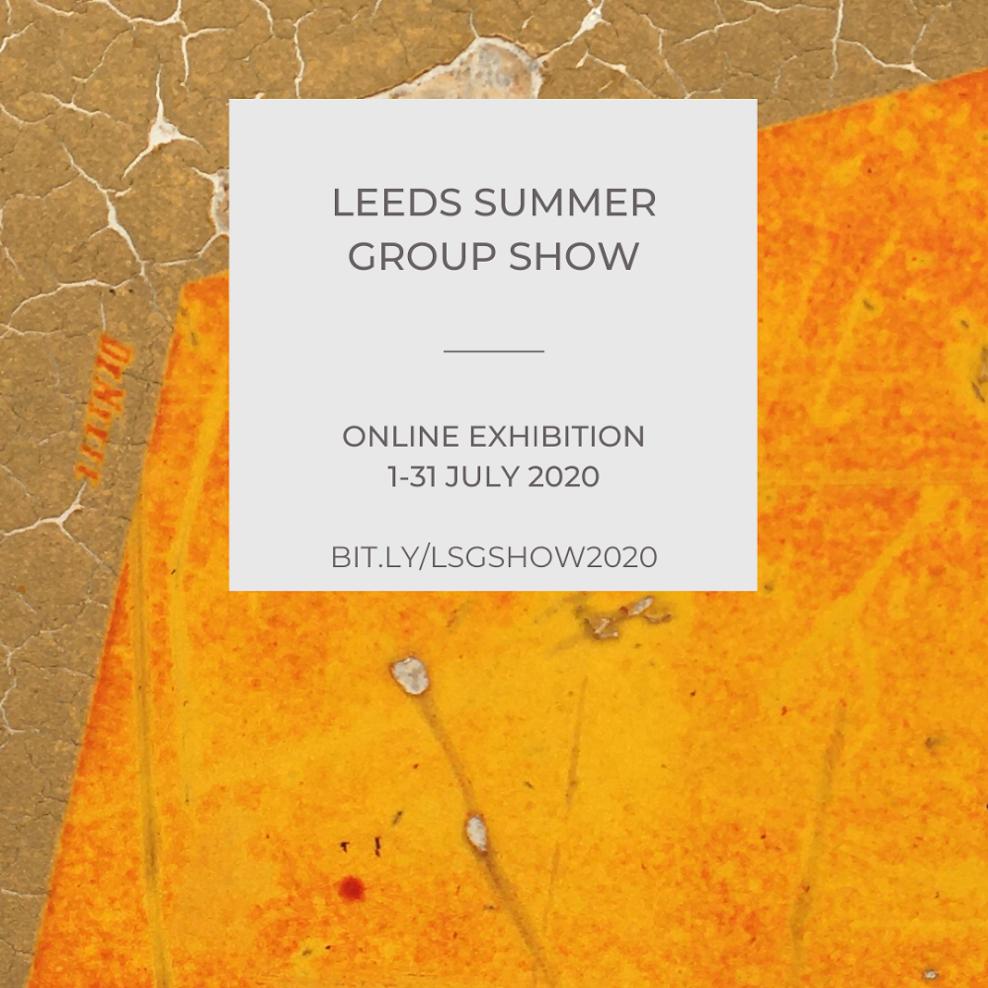
Another great Summer Group show, 100s of entries and so much great work. This year we partnered with Curator Space & organiser Courtney Spencer. Here I spoke to Courtney a little about the show, organising an exhibition during a pandemic & her journey as a creative & curator.
Hey Courtney, great to be working with you again on the Leeds Summer Group Show. Could you tell us a little bit about why you thought it was so important we keep the show going during these times?
Hey there. Yeah, it’s really nice to be working with TSOTA again too.
I suppose I’ve seen the exhibition grow since I started it in 2015 and it’s received such positive response from artists and audiences who have all been very supportive of it. It’s a project I always really enjoyed, I love working with the artists and the selection panel and it totally aligns with my interests and the role I want to take in supporting artists and contributing to the cultural offering of the city. I could really see the value in it, as could others, so it was just something I really wanted to make sure continued to happen.
Earlier in the year when we were all going into lockdown, people were being furloughed, everything felt really uncertain and quite negative, so I wanted to do something positive and provide an opportunity for artists to showcase and sell their work. The pandemic meant I couldn’t have a physical event, so I needed to rethink how I was going to deliver the exhibition and moving it online made complete sense.
In the last few years I had incorporated a £500 cash prize into the exhibition which has been amazing to see the impact the money, and also the confidence boost this has had on artists and the development of their practice, so that was an element of the exhibition I was really keen to continue.
It was brilliant that Leeds Inspired reacted so quickly to COVID-19 by adapting their funding to support projects that were responding to the situation, and I was fortunate to secure funding to contribute to the delivery of the exhibition. Since 2015 I’ve always used CuratorSpace to promote and receive submissions to the open call out. When I spoke to Louise and Philip, they were really keen to partner with me and have very generously supported the project. And obviously I’ve worked with TSOTA previously so it was great to have you guys on board again.
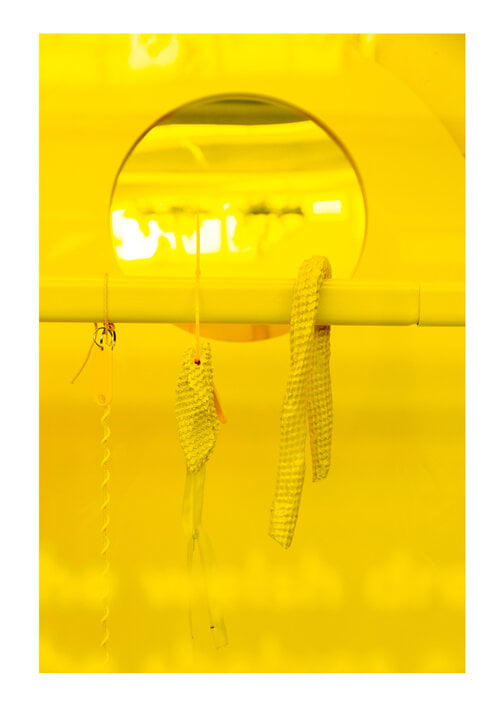
Sarah Roberts, ‘Everything’s Mustard’
How have you found the experience of presenting the show as an online exhibition this year?
It’s been a really different experience and a steep learning curve as we were trying to quickly adapt by taking all elements of the physical exhibition to an online platform in order to still provide this opportunity this year. We had to navigate our way through new ways of working that meant we had to modify the open call out, the way the selection panel worked, the presentation of the exhibition, our approach to sales and the public vote.
Most of the online elements worked well and there have been some advantages to this format that I would definitely look to incorporate alongside [physical exhibitions] in the future. Being online meant that it was much more accessible, artists no longer needed to consider the logistics, which meant those who didn’t have the time or money to ship work could still submit. Initially I was unsure how people would respond to it being online but we actually received twice as many submissions than as the past. So from the 395 submissions the selection panel chose 38 artists to take part, and 6 of these were shortlisted for the £500 cash prize.
Even the selection process was really different. In the past the panel would have spent a day together reviewing submissions though this year we had to do it via a series of online selection rounds and only had one zoom meeting to finalise the selection. It also meant that so much more importance was placed on the documentation of work and how the work from one artist sat side by side. Some of the work that was not chosen was may have been included if it were a physical exhibition. So the selection was very different.
It was more accessible for artists and we saw submissions double, we were able to run the exhibition for an extended period of time spanning the entire month of July, it was more accessible for audiences and attracted far greater visitor numbers, with over 3,000 visitors.
Was there anything that didn’t work so well?
The online voting system didn’t work so well. In previous years visitors cast their votes using a sticker that they received on entry. We had tried to replicate this online using a free plug-in but within the first week of launching it became apparent that the system was not being used as intended. People were able to vote multiple times and were doing so on mass (with over 125,000 votes being cast during the month). One of the shortlisted artists did make a statement apologising for their role in perpetuating the mass voting. Should I choose to award a prize in the future via a public vote I’ll review the voting system and ensure the technology used is fit for purpose.
But this highlights a fantastic learning opportunity and I would be very keen to hear from anyone within the sector who has experienced similar issues or has any advice they would like to share. I am more than happy to facilitate a platform to share experiences and knowledge as we all adopt new ways of working. If you are interested in engaging in this conversation please email me ([email protected]) and I’ll arrange a way to collate and share information should there be sufficient interest.
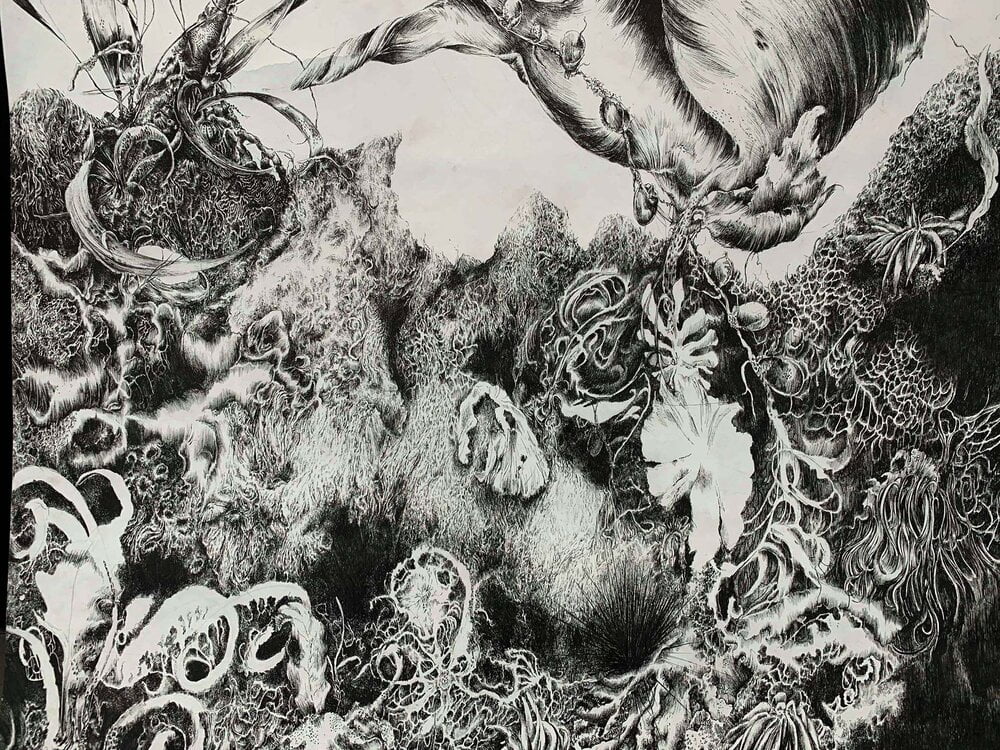
Katie Bennett-Rice, ‘Holdfast’, detail shot
How was the £500 cash prize awarded?
As the online voting system was vulnerable to misuse and was not used in the spirit in which it was intended, the selection panel decided to award all six shortlisted artists/collectives with £100 each and an interview that will be featured on The State Of The Arts website. All six were very worthy winners and the panel felt this was the fairest way to respond to the situation. The six recipients are: ACCA, Alice Chandler, Katie Bennett-Rice, Nisa Khan, Paris Crossley and Sarah Roberts.
One of the shortlisted artists had expressed an interest in sharing the money should she win. I thought that was such a lovely gesture and that’s what prompted the idea of splitting it in response to the situation. We were fortunate that the donor funding the prize was able to increase the donation to £600 (because £83.33 would have been such an odd amount to award!) and that you guys very generously agreed to take on five additional interviews.
One of the artists is donating her £100 to Leeds Arts University to support a student. There really is such a lovely spirit of generosity amongst some and it’s so nice to see those in the arts supporting each other when they can.
Who were the judges and what should we know about them?
This year I was delighted to be joined on the selection panel by:
Holly Grange, is the new Exhibitions Curator at Leeds Art Gallery who has previously held curatorial roles at the Whitworth, S1 Artspace, The Hepworth Wakefield and Tate St Ives. She is also the regional editor (Yorkshire and the Humber) for the art-writing platform, Corridor8.
Louise Atkinson, is a visual artist, curator and researcher, specialising in the relationship between art and ethnography. She is also co-director of CuratorSpace who I have worked with in partnership this year to deliver the project.
Derek Horton, who worked on adventure playgrounds and community arts projects in the 1970s, followed by many years teaching art in higher education. He co-founded the online magazines, ‘/seconds’ with Peter Lewis, and ‘Soanyway’, which he currently edits with Gertrude Gibbons. He recently ran &Model gallery in Leeds for five years with Chris Bloor and James Chinneck, and has been a Visiting Professor at the School of Art, Birmingham City University.
Si Smith is a Leeds-based creative practitioner who freelances as an illustrator, draws, makes comics and prints, and curates exhibitions.
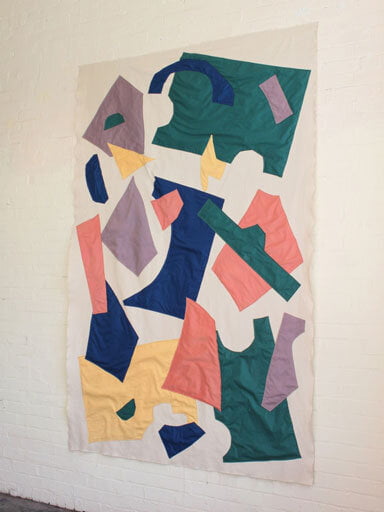
Alice Chandler, ‘Floordrobe’
How did your journey in culture begin?
Since early childhood I have always been interested in art and design. I studied Fine Art and Design at uni in Australia before moving to the UK in 2003. I worked in marketing at Leeds Arts University and Leeds Beckett University, did an MA Business and then moved from higher education into the cultural sector. This move combined my passion for the arts with both my undergrad and postgrad studies, so it felt like a really good fit.
I’ve worked with a number of clients across the arts, was the Director of Left Bank Leeds for five years and earlier this year joined the team at Leeds Museums and Galleries to oversee their audience development team who work across their nine attractions throughout Leeds. So that’s been a brilliant opportunity to work in local authority with an amazing team of really passionate people.
I’m also looking at another annual exhibition I would like to curate and curating a regular programme of exhibitions. So I’m really excited to collaborate with others and develop those ideas.
You’ve recently been on a big trip yourself right, what was that about?
Yeah I did. Towards the end of last year I just felt like work had consumed my life to some extent and I wanted to develop my own creative practice, so I went on an eight week research trip where I revisited the places I had lived during primary school. We moved a bit when I was younger with my Dad’s job in the Bureau of Meteorology. I hadn’t been back to most of these places for over 30 years so it was great to be able to return, experience them as an adult and respond to them without any preconceived ideas as to what form that would take.
I went to tropical islands, a lake, the desert, Aboriginal sacred sites, and stunning ultra-white sand beaches. So there was a lot of sand, earth and ochre involved and I ended up shipping 120kg of found materials back to my studio at Sunny Bank Mills. So now that lockdown is easing, I’m really looking forward to developing a body of work in response to that trip.
Finally, where can people see Leeds Summer Group Show?
The exhibition can be viewed via www.courtspencer.com
Filed under: Art & Photography
Tagged with: art, artist, courtney spencer, covid-19, curator space, event, exhibition, leeds, leeds summer group show, lockdown, online, pandemic, prize, shortlisrt, show, summer


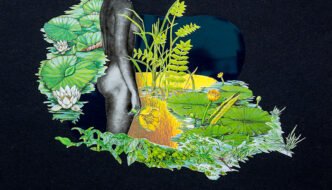
Comments